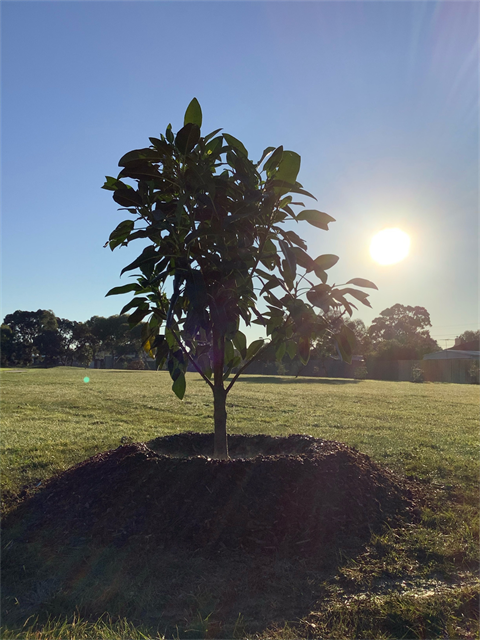
Over 50,000 trees will be planted over the next five years across Hobsons Bay in an ambitious plan to increase the city’s tree canopy cover to 30 per cent by 2040 as part of Council’s draft Hobsons Bay Urban Forest Strategy, which is open for feedback until 23 July 2020.
The ‘urban forest’ refers to all trees on public and private land within urban areas and includes avenues of trees, individual trees and tree groves across Hobsons Bay.
The target of 30 per cent canopy cover in the next 20 years will be achieved by increasing the tree canopy in public parks and streets and private residential gardens to 40 per cent and industrial land to 20 per cent.
As part of the draft strategy and action plan, the community will be encouraged to plant trees on private land, which comprises half of Hobsons Bay’s total land use. To support this, Council will provide free tree giveaways and the chance to adopt a local street tree during summer periods to assist with tree establishment, as well as an opportunity to speak to Council officers about selecting the right tree for your garden.
The draft Urban Forest Strategy also aims to educate the community on the environmental, economic and social benefits of increasing Hobsons Bay’s urban tree canopy, as well as what considerations are now being taken to select appropriate species.
Trees play a significant role in the community in a range of ways. They improve social connection and cohesion by providing attractive places, contribute to local identity and enhance local character.
Trees also provide substantial economic benefits. They can reduce household electricity costs by shading buildings, improve liveability of homes and attractiveness of business areas and therefore increase retail sales and tourism activities.
The urban forest plays an important role in improving air quality and reducing ground temperature by 10C which alleviates the urban heat island, a phenomenon where a city experiences much warmer temperatures than nearby rural areas.
The Heat Vulnerability Index (HVI) developed by Planning Victoria has found some suburbs in Hobsons Bay including Altona North, Altona Meadows, Seabrook, Laverton and Brooklyn have high heat vulnerability.
Local streets and parks in Altona North, Altona Meadows, Seabrook, Laverton and Brooklyn are identified as priority areas in the strategy.
The strategy also aims to diversify Council trees. Currently in Hobsons Bay, 50 per cent of the street and park trees are from the Myrtaceae family, which can leave the overall tree population at risk of mass decline if a pest or disease is introduced. Future tree plantings will incorporate a wider range of different species with generous canopies to help combat urban heat.
Hobsons Bay residents, businesses and owners of industrial land are invited to provide feedback and view the draft strategy and action plan on Participate Hobsons Bay until 23 July at
As stated by Mayor of Hobsons Bay Cr Colleen Gates
“The draft Urban Forest Strategy sets a bold target to increase tree canopy in Hobsons Bay from the current coverage of 7.5 per cent to 30 per cent by 2040.
“A generous urban tree canopy that cools the city is crucial to improving community health, air quality and long-term amenity benefits for all our streets and parks.
“We saw through our Cool Streets program that residents quickly embraced large canopy trees once they were aware of all the benefits, not only environmental ones, but also to their hip pocket with reduced electricity bills.
“The second phase of our Cool Streets program, will invite residents to get involved in planting trees in their nature strip, and will be rolled out in Brooklyn, Spotswood and Altona Meadows as part of my Mayoral Program.
“For this strategy to be successful, it is imperative for the residents, businesses, industry, environmentalists, developers and everyone in between to get involved and care about our trees as much as we do.”








